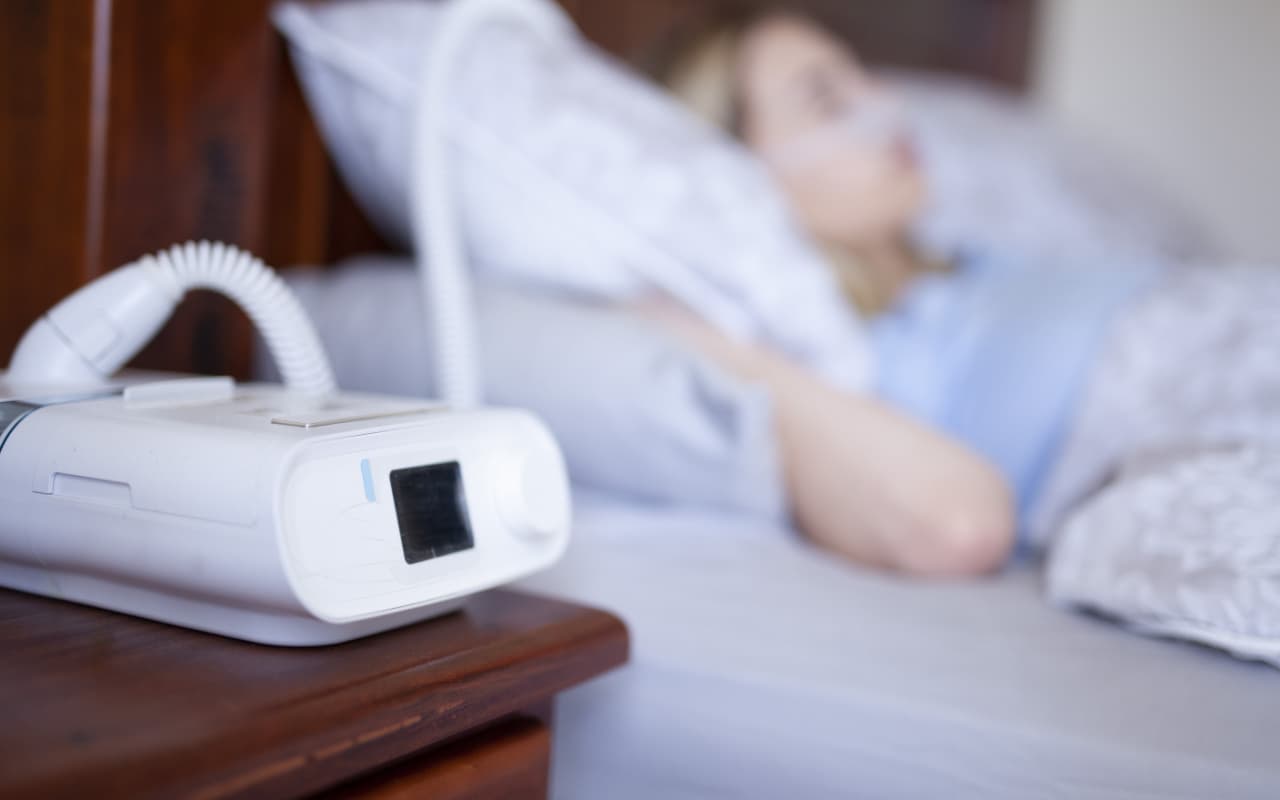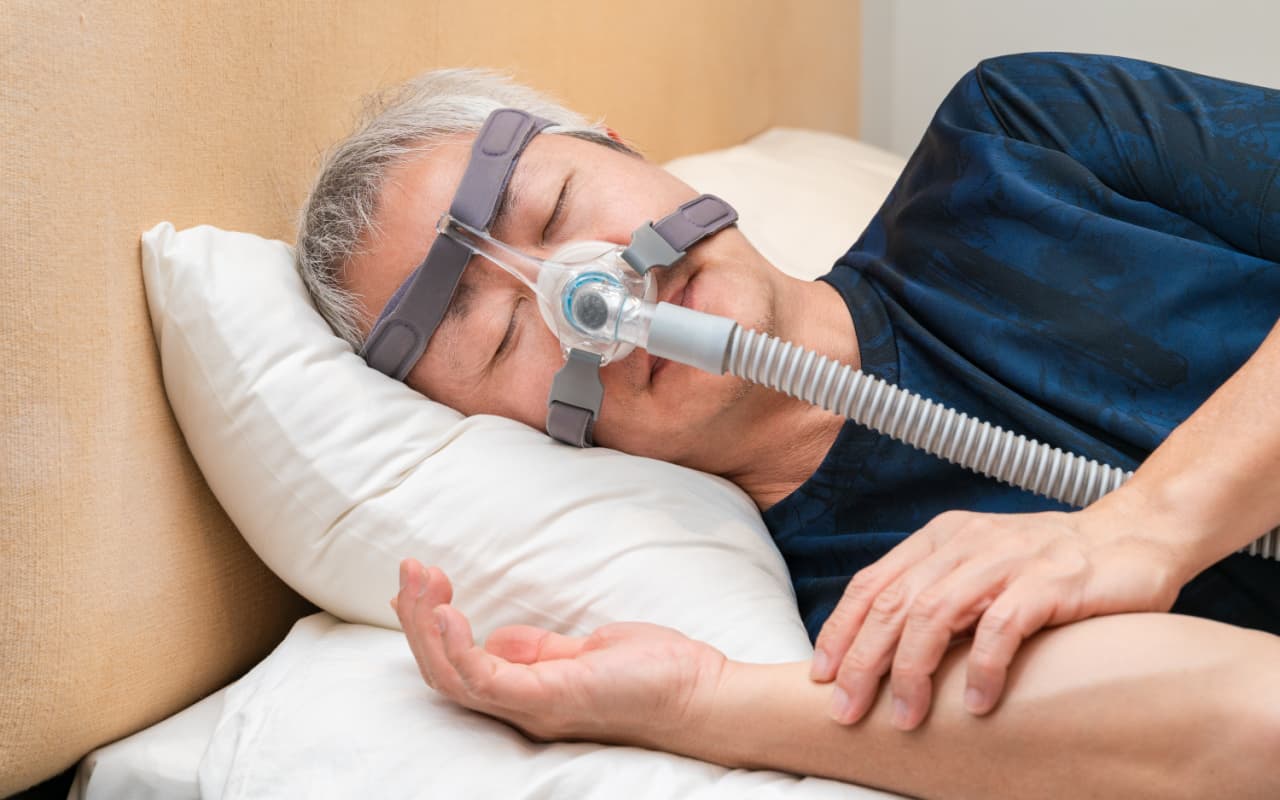Foul odors, allergies, and premature equipment breakdown. These are just some of the issues continuous positive airway pressure (CPAP) users face when they fail to clean their machines regularly. Considering the average CPAP device costs between $500-800, it's important to care for your investment. If you were recently diagnosed with obstructive sleep apnea and are still learning the ropes, we've created this beginner's guide to CPAP cleaning.
What is a CPAP machine?
A CPAP machine is a medical device that provides a steady flow of oxygen through your mouth and nose during sleep. This prevents the soft tissues at the back of your throat from relaxing and blocking your airways, allowing you to breathe clearly. When you're able to breathe, it's easier to get a restful night's sleep. That results in improved focus, increased energy levels, and a better quality of life.
What are the components of a CPAP machine?
All CPAP machines have the same basic components regardless of brand, including:
A motor encased in a plastic unit
A cushioned mask
A tube that connects the motor to the mask
Headgear
Plastic connectors that act as joints
Adjustable straps to achieve the perfect fit
Your machine also comes with an owner's manual that includes instructions and often a manufacturer warranty. Carefully read the manual from back to front and register the warranty immediately.
Why is cleaning my CPAP machine important?
Though it might seem like a hassle, keeping your CPAP machine clean is absolutely critical. The air you breathe throughout the night runs through a filter and a humidifier, but those components won't necessarily eliminate all the microbes.
Failing to wash your CPAP device allows bacteria, mold, and viruses to thrive. Not to mention, mineralization can build up inside the machine, causing the motor and other components to break down prematurely. What's more, without routine preventive care, your device's manufacturer might void the warranty.
How often does a CPAP machine need to be cleaned?
Most CPAP manufacturers recommend cleaning your device daily, especially if you suffer from allergies or come down with an upper respiratory infection.
If you lead a busy lifestyle or have a health problem like rheumatoid arthritis that makes the cleaning process difficult, once a week is fine. However, waiting any longer increases the risk of the equipment malfunctioning.
What supplies do I need to clean my CPAP machine?
To clean your CPAP machine, gather the following supplies:
CPAP components (mask, tubing, water chamber, and headgear)
Mild soap that's unscented
White vinegar
Warm water (preferably distilled water)
Sink, bathtub, or a washbasin
Clean, dry towels
Cleaning your CPAP In 4 Steps
Once you gather all of the necessary supplies, it's time to get to work. Here's the process in three simple steps:
Step 1: Disassemble the machine
Unplug your CPAP device so there's no danger of an electrical shock. Then, remove and disconnect each attachment, including the mask, hose, and headgear. If your device has a water chamber for the humidifier, remove that as well.
Step 2: Wipe down the machine
Wet one of the dry towels with warm water. Then, ring out any excess moisture and carefully remove any dust, grime, or hair from the plastic unit. Set the machine aside and allow it to air dry.
Step 3: Soak the other components
Fill your sink, bathtub, or washbasin with warm, drinking-quality water. Then, add a small amount of gentle soap, preferably one that doesn't contain moisturizing ingredients.
Once the water is ready, soak all of the components, including your mask, hose, and headgear. If your unit has a water tank, fill that with soapy water as well. Let all of the components sit for at least 30 minutes.
Pro tip: For an extra thorough clean, add some white vinegar to the water (a ratio of 1:1 should do).
Remove all of the components from the soapy water, rinse them thoroughly, and let them air dry. If you live in a humid climate, hang the hoses over a door or on a towel rack to speed up the drying process.
Step 4: Reassemble
Once everything is completely dry, reassemble your machine, plug it in, and turn it on.
DOWNLOAD THE CHECKLIST
Is there any way to make cleaning my CPAP easier?
Yes. At Carewell, we understand that cleaning your CPAP daily can be time-consuming. If you want to speed up the process, consider investing in an automated system like SoClean®.
SoClean is the world's first self-regulating CPAP cleaning and sanitization device. It uses activated oxygen to disinfect your mask, hose, and reservoir, with no water, disassembly, or cleaning chemicals required.
Simply take off your CPAP mask and place it inside the unit. SoClean can sanitize most brand-name devices, including those manufactured by ResMed, Respironics, and DeVilbiss.
Where can I purchase the SoClean CPAP cleaner and sanitizer machine?
We recently added the SoClean 2 CPAP Cleaner and Sanitizer Machine to our website. You can also purchase:
If you have any questions about the SoClean device or how to use the associated products, reach out to our friendly Care Team by calling (800) 696-CARE or sending an email to support@carewell.com.
CPAP FAQ
1. Can your CPAP machine make you sick?
Yes. If mold, mildew, or bacteria build up inside the unit, you're more likely to experience respiratory issues. Make sure your unit is cleaned weekly, and if possible, daily.
2. Do I need to clean my CPAP mask?
Yes. It's important to clean all aspects of your unit, including the mask. Since the mask makes direct contact with your skin, it's more likely to collect oil, causing dirt and grime to accumulate.
3. Can I clean my CPAP in the dishwasher?
Never put any component of your CPAP in the dishwasher. The high temperatures and constant water pressure can cause the materials to degrade, causing your CPAP to wear down or break.
4. Is cleaning CPAP equipment always the same?
There are several ways to clean CPAP equipment. You can do it by hand or with an automated system like the SoClean cleaner and sanitizer. As long as you follow the instructions, you can feel confident knowing your unit is spotless.
5. Does sleep apnea always require CPAP equipment?
Not necessarily. Treatment of sleep apnea depends on the type (i.e. obstructive, central, or complex) and the severity of your symptoms. Your primary care physician can make recommendations that meet your needs.



